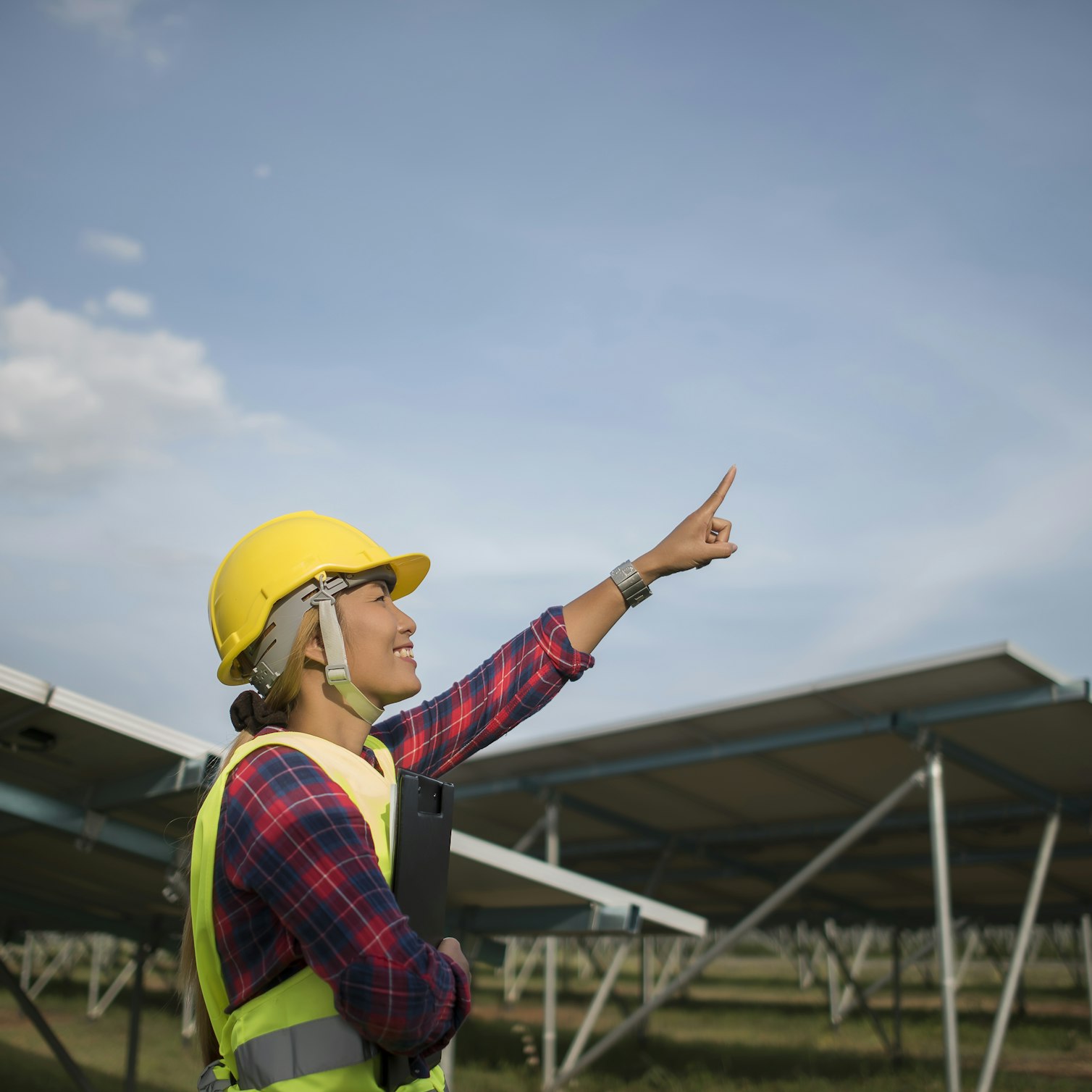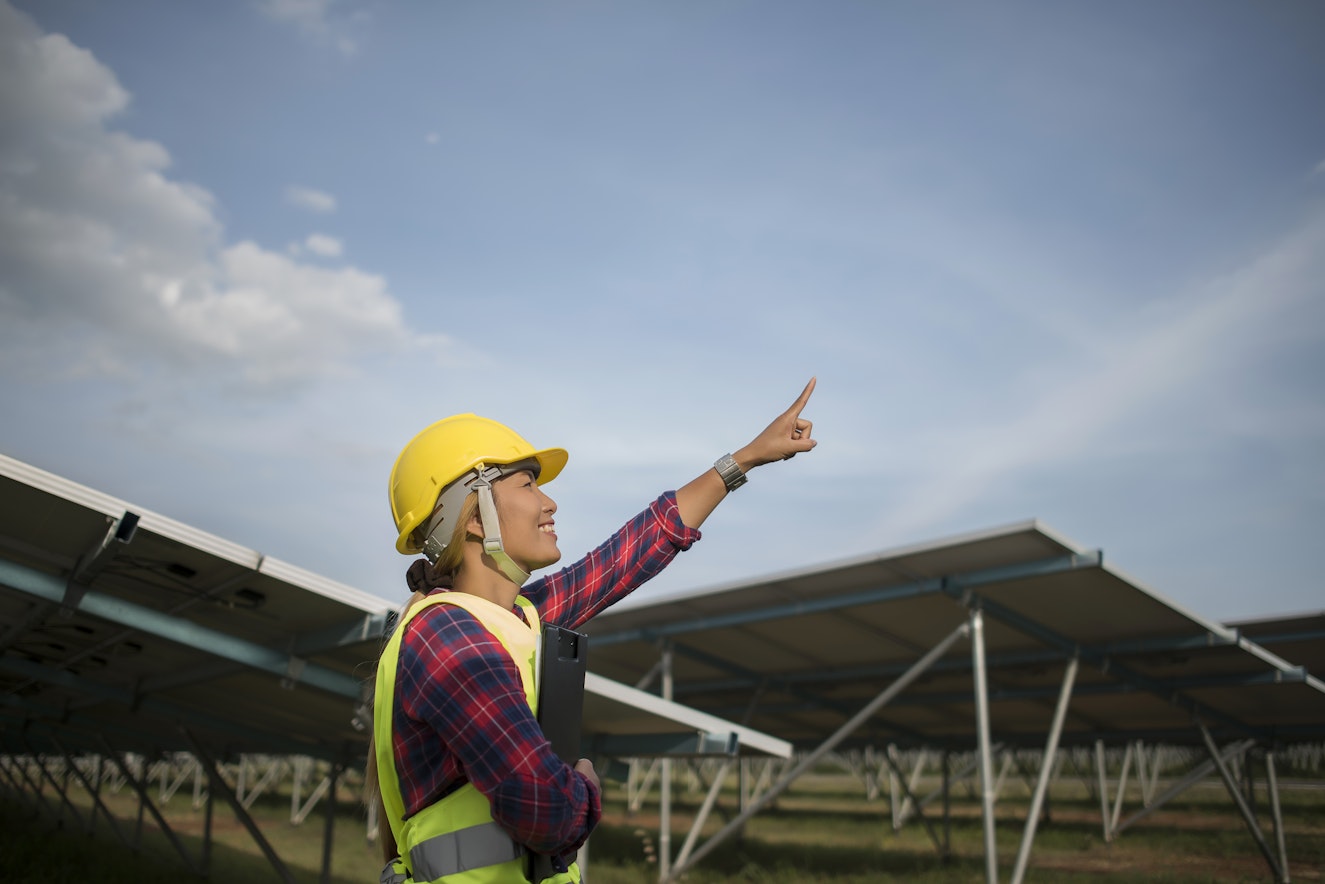- Solar energy blog
- How to retain the best female talent in the renewables sector
How to retain the best female talent in the renewables sector
Women are still underrepresented in the renewables sector. Find out why and how to engage, retain, and nurture the best female talent in this blog.


Eva Cabanach
Head of Marketing
Eva Cabanach is the Head of Marketing at RatedPower. With over 15 years of experience in the marketing realm, she has spent the last 9 years building, leading, and scaling marketing teams in high-growth B2B SaaS startups. Passionate about demand generation and process optimization.

Content
The renewable energy sector has been going from strength to strength in recent years. Over the past decade, it has been growing steadily, with the market currently valued at approximately $1.21 trillion in 2023. This is expected to increase to over $2 trillion by 2030 and shows no signs of slowing down.
Naturally, alongside this growth, there has also been an explosion in the number of renewable jobs. It was estimated that at the beginning of 2023, over 13.7 million people were working in the industry, with just under 5 million of those in solar PV.
Despite this growth, there is still a significant gender gap in the renewable sector. In this blog, we’ll look at women in the renewable energy industry, why they are leaving their jobs, and how to retain and nurture the best female talent to support the green transition.

Women in the renewables and solar energy sector
On average, women only represent 24% of workers in the traditional energy sector. For the renewable industry, the number is better at 32% but still represents a notable gender disparity. More encouragingly, women comprise 40% of the solar PV sector workforce, the largest percentage in the renewables space. However, this is still below the economy-wide average of 45.9%.
The energy sector is facing the same challenges and hurdles as many others. Firstly, a 15% pay gap exists, even when comparing employees with equal skill levels. Secondly, despite this relatively good representation in the solar PV industry, the proportion is uneven and bottom heavy. This means that women are often hired for administration positions, making up almost two-thirds of those jobs. STEM and non-STEM technical positions (installation, distribution, sales, marketing) only have 32% and 35% of women in those roles. Regarding managerial jobs, women comprise 30% and senior management positions upwards only 17%.
These disparities are by no means found exclusively in the solar sector; they are apparent across the economy. However, it is clear there is still plenty to be done in the solar and the broader energy landscape to attract, retain, and engage female talent.

The Great Resignation
Much has been made of the “Great Resignation” in recent years. Referring to the vast numbers of people leaving their jobs since 2021, the Great Resignation was attributed to the pandemic and the fallout effects of a global lockdown. Employees resigned in record numbers, with people citing low pay and wishing to work for a company more aligned with their values as significant drivers for their decisions to leave.
While experts are now saying that the Great Resignation has come to an end, the underlying reasons for it happening in the first place are still very much present in the workforce. And the renewables sector is no exception.
This all adds to a perfect storm brewing for renewable energy employers. While the renewable industry is flourishing, there is already a shortage of skilled personnel and the remnants of a disengaged workforce. Add onto this the fact that qualified women aren’t represented to the extent they could be, and finding the workers needed to drive the green transition looks like a very tricky prospect.
POWERful Women, a UK initiative looking to create a diverse and gender-balanced energy sector, released a report last year exploring why women left their jobs in the energy sector.
The report found three primary reasons for women choosing to leave their roles. Let’s look at each in turn:
Feeling under-valued
Women in the energy sector feel that despite working just as hard and having the same level of skills and knowledge as their male counterparts, their progression in the industry was limited. The 15% pay gap supports this sentiment. On top of this, they feel they were not given the opportunity to contribute in a way that aligned with their values and that job opportunities and overall job satisfaction were low.
An unmanageable work-life balance
In this new world of remote work, people are looking for more flexibility in their jobs, both in the hours and location. However, this new culture and the ongoing cost of living crisis have led to people working longer hours than ever before.
This increased time spent at work is a holdover from the pandemic and the shift to a more remote way of working. Although this remote model allows for greater flexibility and job satisfaction, on the whole, many people find themselves working longer hours and on weekends.
This finding by POWERful Women is echoed by other research in the latest Energy Global Study, which reveals that one of the reasons for women leaving their roles was the lack of support and flexibility afforded to them by their employers.
A toxic work environment
Despite the workforce being more diverse and integrated, some workplaces are still unwelcoming, particularly for women. POWERful Women found that a macho culture, bullying, bias, and a lack of genuine commitment to diversity and inclusion were the final driving factors behind women leaving their energy sector jobs.
Again, this is validated by other research across the wider workforce. In the Why Women Leave research conducted by Ecompass Equality in 2023, 65% of respondents cited workplace culture as a major reason for them looking for other opportunities.

How can we retain and nurture the best female talent?
So, what can we do to ensure that we address not only the employment and pay gaps present in the solar sector and the wider renewable energy industry but also ensure we attract, retain, and nurture women working in the industry?
According to the POWERful Women report, there are three impactful actions we can take to ensure that we are making the renewables sector a diverse and inclusive place for all.
Empower women to make a difference at work
Many women feel that, despite their skills and competency, they are unable to make a meaningful impact at work. Actions, such as implementing open, unbiased recruitment and performance management programs ensure that women are chosen on merit and are not overlooked for positions or projects based on their gender. Creating mentorship programs can empower women to take on leadership roles where they can see their contributions making a tangible impact on both their company and the wider industry.
Foster a supportive environment
The fact that so many women report workplace culture as a primary driver behind their resignations is damning. Employers need to ensure that workplace behaviors and cultures are shaped so that women feel safe, respected, and supported in their work.
This starts at the top, with management committing to fostering a supportive environment. This also means that any complaints are taken with the seriousness they merit and there is a zero tolerance policy to discrimination.
Women also need to be afforded the flexibility they require in their work, both in terms of working hours and location.
Diversity from the top down
Linked to the point above, many women say they want management to take diversity and inclusion seriously in the workplace and not just pay lip service externally. Company leaders need to embrace equality, diversity, and inclusion initiatives and enact them across their organization.
This means there needs to be diversity in the leadership teams themselves, showing that management is committed to making the workplace a more inclusive environment that supports employees from all backgrounds. More needs to be done to educate and train employees at all levels of the industry to ensure that everyone is moving towards a more equal future.
If you’re looking for more insights into the renewables and wider energy industry, make sure you visit the RatedPower resources page!
Latest stories
Related posts
Driving the change
Green by design: How solar energy is shaping the future of data centers
Find out how and why data centers are turning to cost-effective renewable sources like solar power to use cleaner energy and reduce their environmental impact.
Updated 9 OCT, 25

Driving the change
Japan’s groundbreaking solar power experiment: solar power from space
Learn about the OHISAMA program, a project designed to test the feasibility of harnessing solar power from space. Could it help generate clean baseload energy?
Updated 1 JUL, 25

Driving the change
A look at the comunidades energéticas in Spain
Comunidades energéticas are at the heart of Spain’s shift to a greener and more decentralized grid. Explore more about these citizen-powered networks.
Updated 28 JAN, 25

- RatedPower
- Solar energy blog
- How to retain the best female talent in the renewables sector
 Watch a demo
Watch a demo Ask our AI Product Expert
Ask our AI Product Expert

